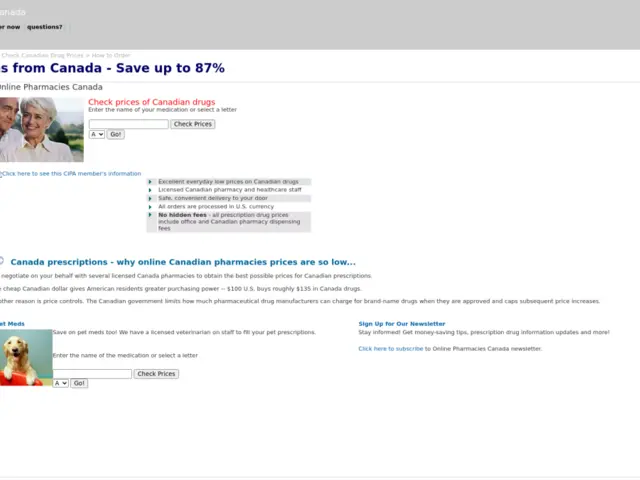When your knees ache with every step, or your hands stiffen up in the morning, finding relief from arthritis pain becomes more than a convenience-it’s a necessity. Many people turn to over-the-counter painkillers first, but when those don’t cut it, doctors sometimes prescribe mefenamic acid. It’s not as well-known as ibuprofen or naproxen, but for some, it’s the only thing that works. Still, it’s not without risks. If you’re considering mefenamic acid for arthritis, you need to know what it can do, what it can’t, and what might go wrong.
What is mefenamic acid and how does it work?
Mefenamic acid is a nonsteroidal anti-inflammatory drug, or NSAID. It belongs to the same family as aspirin, ibuprofen, and diclofenac. What makes it different is how it targets inflammation at the source. When your joints swell and hurt due to osteoarthritis or rheumatoid arthritis, your body releases chemicals called prostaglandins. These chemicals cause pain and swelling. Mefenamic acid blocks the enzyme that makes them-COX-1 and COX-2-slowing down the inflammation process before it gets worse.
Unlike some NSAIDs that are taken daily for long-term management, mefenamic acid is usually prescribed for short-term use. Most people take it for a few days to a week, especially during flare-ups. It’s not meant to cure arthritis. It’s meant to give you a window of relief so you can move better, sleep through the night, or get through a tough day.
Who benefits most from mefenamic acid?
Not everyone with arthritis responds the same way to painkillers. Some find ibuprofen too weak. Others can’t tolerate the stomach upset from diclofenac. Mefenamic acid often fills that gap. Studies show it’s particularly effective for people with mild to moderate joint pain, especially when the pain is tied to inflammation rather than just wear and tear.
Women with menstrual cramps often use mefenamic acid too-it’s approved for that in many countries, including Australia. That’s because it’s strong at reducing uterine inflammation. If you have arthritis and also get severe period pain, this might be a double-duty option. But it’s not a first-line treatment for arthritis. Doctors usually try paracetamol or simpler NSAIDs first.
How quickly does it work?
Most people feel some relief within 30 to 60 minutes after taking a dose. Peak pain relief usually hits around two to three hours later. That’s faster than some other NSAIDs, like celecoxib, which can take up to four hours. The effects last about six to eight hours, which is why it’s typically taken three or four times a day.
One real-world observation from Australian rheumatology clinics: patients who switched from ibuprofen to mefenamic acid often report better nighttime pain control. That’s important-sleep disruption is one of the biggest quality-of-life issues for people with arthritis. If you’re waking up at 3 a.m. with stiff, burning joints, mefenamic acid might help you stay asleep longer.
What are the side effects?
Every medication has trade-offs. With mefenamic acid, the most common side effects are mild: nausea, stomach pain, dizziness, or diarrhea. These usually go away after a few days as your body adjusts. But there are more serious risks you can’t ignore.
Like all NSAIDs, mefenamic acid increases your risk of stomach ulcers and bleeding. This risk goes up if you’re over 65, take steroids, drink alcohol regularly, or have a history of ulcers. A 2023 study in the Journal of Rheumatology found that NSAID-related gastrointestinal bleeding led to hospitalization in 1 in 200 older adults taking the drug for more than two weeks.
It can also affect your kidneys. If you’re dehydrated, have high blood pressure, or already have kidney issues, mefenamic acid can make things worse. Your doctor should check your kidney function before prescribing it. And if you’re on diuretics or ACE inhibitors, the combination can be dangerous.
Heart risks are another concern. Long-term use of any NSAID, including mefenamic acid, has been linked to higher chances of heart attack or stroke, especially in people with existing heart disease. The FDA warns that this risk can appear as early as the first few weeks of use.

Who should avoid mefenamic acid?
There are clear red flags. Don’t take mefenamic acid if:
- You’ve had an allergic reaction to aspirin or other NSAIDs (think hives, swelling, trouble breathing)
- You’re in your third trimester of pregnancy-it can cause complications in the baby’s heart and reduce amniotic fluid
- You have severe heart failure, liver disease, or active peptic ulcer disease
- You’re under 14 years old-it’s not approved for children in Australia
- You’re taking other NSAIDs, blood thinners like warfarin, or SSRIs like fluoxetine
Even if none of these apply, talk to your doctor before starting. Many people don’t realize that over-the-counter painkillers can interact with prescription meds. A simple cold tablet with ibuprofen added to your mefenamic acid dose could push you into danger.
How is it dosed? What’s safe?
In Australia, the standard dose for arthritis is 500 mg three times a day, taken with food to reduce stomach upset. The maximum daily dose is 1,500 mg. Never go over that. Some people think more is better-but with NSAIDs, that’s not true. Higher doses don’t mean more pain relief. They just mean higher risk.
Most doctors recommend taking it for no longer than seven days unless closely monitored. If you still need it after a week, it’s time to revisit your treatment plan. Maybe you need physical therapy. Maybe a different drug. Maybe a steroid injection. Mefenamic acid is a tool, not a solution.
What are the alternatives?
If mefenamic acid doesn’t work-or if the side effects are too much-there are other options. Here’s how they compare:
| Medication | Typical Dose | Onset of Action | Duration | Key Risks |
|---|---|---|---|---|
| Mefenamic acid | 500 mg three times daily | 30-60 minutes | 6-8 hours | Stomach ulcers, kidney strain, heart risk |
| Ibuprofen | 200-400 mg three to four times daily | 30 minutes | 4-6 hours | Stomach upset, higher blood pressure |
| Naproxen | 250-500 mg twice daily | 1-2 hours | 8-12 hours | Longer heart risk window, kidney issues |
| Paracetamol (acetaminophen) | 500-1000 mg four times daily | 30-60 minutes | 4-6 hours | Liver damage at high doses |
| Celecoxib (COX-2 inhibitor) | 100-200 mg once or twice daily | 1-2 hours | 12-24 hours | Lower stomach risk, higher heart risk |
Paracetamol is often the safest first choice for mild pain. It doesn’t reduce inflammation, but it’s gentle on the stomach and kidneys. If inflammation is the main issue, naproxen might be a better long-term option than mefenamic acid because it’s taken less frequently and has more safety data over years of use.

Real-life tips for using mefenamic acid safely
If your doctor says it’s okay to try mefenamic acid, here’s how to use it wisely:
- Always take it with food or milk. Never on an empty stomach.
- Drink plenty of water throughout the day to protect your kidneys.
- Don’t mix it with alcohol. Even one drink can increase bleeding risk.
- Keep a pain diary. Note when you take it, how much relief you get, and any side effects. This helps your doctor adjust your plan.
- Set a phone reminder. Taking it three times a day is easy to forget-and skipping doses can make pain worse.
- Stop immediately and call your doctor if you notice black, tarry stools, vomiting blood, chest pain, sudden swelling in your legs, or unexplained weight gain.
When should you stop and see a doctor?
Some signs mean it’s time to stop and get help:
- Dark, tarry stools or blood in vomit (signs of internal bleeding)
- Sudden shortness of breath or chest tightness
- Swelling in your ankles, feet, or hands
- Yellowing of skin or eyes (liver trouble)
- Severe dizziness, confusion, or fainting
These aren’t common, but they’re serious. If you’re over 60, have diabetes, or take multiple medications, you’re at higher risk. Don’t wait until it’s an emergency. Call your GP or go to a clinic if something feels off.
Final thoughts: Is mefenamic acid right for you?
Mefenamic acid can be a useful tool for short-term arthritis pain relief, especially when other NSAIDs don’t work. But it’s not a magic bullet. It’s a powerful drug with real dangers. The key is using it carefully, for the shortest time possible, and only under medical supervision.
There’s no single best painkiller for arthritis. What works for your neighbor might not work for you. The goal isn’t just to numb the pain-it’s to manage it safely so you can keep moving, keep living, and avoid complications down the road.
If you’re considering mefenamic acid, talk to your doctor about your full medical history, all the other meds you take, and what your real goals are. Maybe you need more than a pill. Maybe you need a physiotherapist, a weight plan, or a joint injection. Mefenamic acid might help you get there-but it shouldn’t be the only thing you’re doing.
Can I take mefenamic acid with paracetamol?
Yes, you can take mefenamic acid with paracetamol. They work in different ways, so they’re often combined for better pain control. Paracetamol doesn’t affect inflammation but helps with general pain, while mefenamic acid reduces swelling. Just make sure you don’t exceed the daily limit for paracetamol-no more than 4,000 mg in 24 hours. Always space the doses out and avoid alcohol.
Is mefenamic acid stronger than ibuprofen?
For some people, yes. Mefenamic acid is more potent at reducing inflammation, especially in the joints and uterus. But ibuprofen works faster and is safer for short-term use in healthy adults. Strength isn’t the only factor-side effects and how your body reacts matter more. If ibuprofen gives you stomach cramps and mefenamic acid doesn’t, then mefenamic acid is the stronger choice for you-even if the numbers say otherwise.
Can mefenamic acid cause high blood pressure?
Yes. Like all NSAIDs, mefenamic acid can cause your blood pressure to rise, even if you’ve never had high blood pressure before. This is especially true if you’re taking it for more than a few days. If you have hypertension, your doctor should monitor your blood pressure closely while you’re on it. Don’t skip checkups.
How long does mefenamic acid stay in your system?
The half-life of mefenamic acid is about two to three hours, meaning half of it leaves your body in that time. But it can take up to 24 hours for nearly all of it to be cleared, especially in older adults or those with kidney issues. That’s why it’s taken multiple times a day-to keep levels steady. Don’t double up if you miss a dose. Wait until your next scheduled time.
Is mefenamic acid safe for long-term arthritis treatment?
No. Mefenamic acid is not approved for long-term use in arthritis. The risks of stomach bleeding, kidney damage, and heart problems increase significantly after two weeks of daily use. If you need ongoing pain relief, your doctor should explore alternatives like physical therapy, disease-modifying drugs, or safer NSAIDs like naproxen with a stomach protector. Long-term NSAID use should always be managed by a specialist.
If you’ve been living with arthritis pain for years, you’ve probably tried a lot of things. Mefenamic acid might be one more option on the table. But don’t let convenience override caution. Pain relief shouldn’t cost you your health. Work with your doctor, track your symptoms, and never assume a prescription is automatically safe just because it’s been approved.





Reginald Maarten - 2 November 2025
Mefenamic acid isn't 'less known'-it's just not marketed aggressively in the U.S. because Pfizer doesn't own the patent anymore. The pharmacokinetics are actually superior to ibuprofen for cyclooxygenase-2 selectivity, but only if you're not taking it with NSAIDs-which, ironically, most patients do. Also, the 2023 Journal of Rheumatology study you cited? They used a 1,500 mg/day dose for 21 days. That's not standard practice-it's a toxicity trial. Don't conflate outlier dosing with clinical reality.
Jonathan Debo - 4 November 2025
Let me correct several egregious inaccuracies in this post: first, mefenamic acid does not inhibit COX-1 and COX-2 'equally'-it has a 3:1 preference for COX-1, making it more ulcerogenic than celecoxib, which is COX-2 selective. Second, the half-life is not 'two to three hours'-it's 1.8–2.2 hours in healthy adults, and prolonged in renal impairment. Third, you state it's 'approved for menstrual cramps in Australia'-technically, it's approved under the brand name Ponstan, not as a generic standalone indication. And fourth-please, for the love of etymology-'paracetamol' is not an Australian term; it's the international nonproprietary name. Americans say 'acetaminophen.' This isn't pedantry-it's precision.
Robin Annison - 4 November 2025
I’ve been on this drug for three flare-ups over two years. It doesn’t cure anything, but it gives me back hours-real, quiet hours-where I can read without wincing. I don’t think of it as medicine so much as a temporary bridge. The real work happens afterward: stretching, heat packs, talking to my PT. This pill doesn’t fix me. But it lets me show up for the things that do. Maybe that’s the point-not to eliminate pain, but to make space for healing.
Abigail Jubb - 5 November 2025
They’re hiding something. NSAIDs were pushed hard after the Vioxx scandal to keep the pharmaceutical machine running. Mefenamic acid? It’s cheaper than celecoxib, so they’re dumping it on elderly patients who can’t fight back. I saw my neighbor on it-she started bleeding internally after three weeks. No one warned her. No one asked if she was on blood thinners. This isn’t medicine-it’s corporate triage.
George Clark-Roden - 6 November 2025
I’ve been living with rheumatoid arthritis for 17 years. I’ve tried everything-from methotrexate to acupuncture to CBD oil. Mefenamic acid was the first thing that let me hold my granddaughter without crying. I know the risks. I track my blood pressure. I never skip my kidney panels. But sometimes, the cost of not taking it is worse than the cost of taking it. It’s not about being reckless-it’s about choosing what kind of life you’re willing to live. I’d rather have a week of stomach upset than a month of sleepless nights. And if that makes me naive, then maybe the system is broken, not me.
Hope NewYork - 7 November 2025
why do people even take this? paracetamol works fine and its not gonna kill you. also why is everyone so obsessed with 'inflammation' like its some magic word? its just pain. just take a tylenol and chill. also who even uses 'mefenamic acid' outside of a textbook? sounds like a drug from a bad sci-fi movie.
Bonnie Sanders Bartlett - 9 November 2025
If you're thinking about trying mefenamic acid, please talk to your doctor first. Don't just read online and decide for yourself. Your body is unique. What works for someone else might not be safe for you. And if you're worried about side effects, keep a journal. Write down how you feel each day. That way, you and your doctor can make smart choices together. You're not alone in this. There are people who want to help you stay healthy-not just numb the pain.
Melissa Delong - 11 November 2025
Did you know that mefenamic acid was originally developed as a veterinary anti-inflammatory? It was repurposed for humans in the 1960s with minimal long-term trials. The FDA only approved it conditionally. Now it’s sold over-the-counter in 14 countries despite having no Phase IV safety data beyond five years. This isn’t medical progress-it’s regulatory negligence. And they call it 'safe' because no one wants to admit how little we actually know.
Marshall Washick - 11 November 2025
I read all the comments and I just want to say-thank you. This thread isn’t about who’s right or wrong. It’s about people trying to survive. I’ve been on this drug for six months. I had a GI bleed last year. I’m terrified. But I still take it, because I can’t stand the thought of missing my daughter’s graduation. I don’t know if I’m brave or foolish. But I know I’m not alone. And that matters more than any study, any warning, any side effect list.